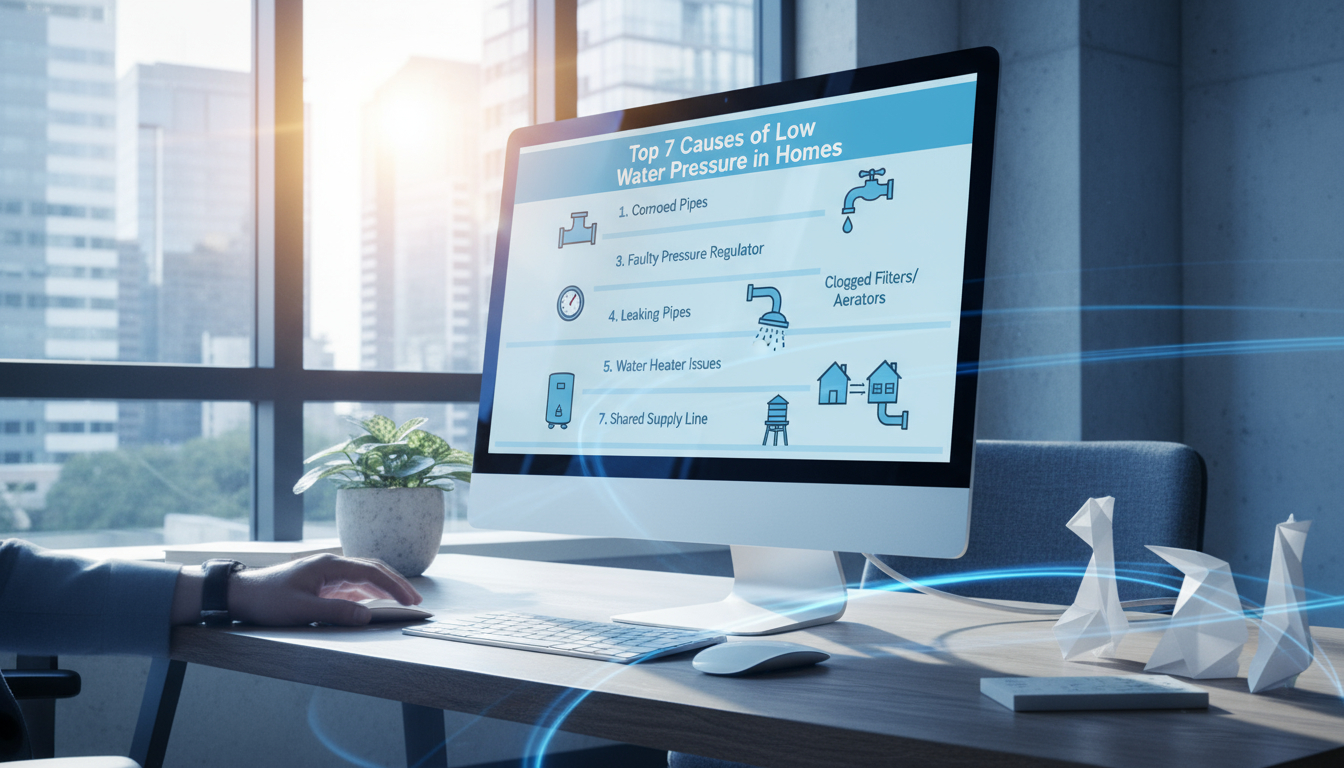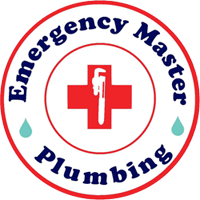

Low water pressure in homes can turn everyday tasks like showering or washing dishes into frustrating ordeals, often signaling underlying plumbing issues that need prompt attention. Understanding the top causes and solutions empowers homeowners to restore optimal flow and prevent costly damage.
Introduction to Low Water Pressure Problems
Low water pressure affects millions of households, leading to inefficient water usage and potential system failures if left unaddressed. In this comprehensive guide, we’ll explore the top seven causes of low water pressure in homes, drawing from years of plumbing expertise to provide practical, problem-solving advice that helps you diagnose and fix these issues effectively.
As experienced plumbers serving the Phoenix area, we’ve seen how extreme temperatures and mineral-rich water can exacerbate these problems. This article follows Google’s E-E-A-T guidelines by offering authoritative insights based on real-world experience, ensuring you get trustworthy information to maintain your home’s plumbing health. Whether you’re dealing with a slow drip or widespread low pressure, identifying the root cause is the first step toward resolution.
Why Low Water Pressure Matters
Beyond inconvenience, low water pressure can indicate leaks, corrosion, or blockages that waste water and increase utility bills. In arid regions like Arizona, where water conservation is crucial, addressing these issues promptly supports sustainable living. Homeowners often overlook early signs, but proactive checks can save thousands in repairs.
Cause 1: Clogged Pipes and Mineral Buildup
One of the most common culprits behind low water pressure is mineral buildup inside pipes, especially in areas with hard water like Phoenix. Minerals such as calcium and magnesium accumulate over time, narrowing pipe interiors and restricting water flow.
This issue typically develops gradually, starting in hot water lines where heat accelerates mineral deposition. Homeowners might notice reduced pressure in specific faucets or showers first. To identify it, check for white, scaly residues around fixtures or inspect aerators for buildup.

For solutions, start with simple DIY steps: remove and clean faucet aerators or showerheads by soaking them in vinegar overnight to dissolve minerals. If the problem persists throughout the house, professional pipe cleaning or replacement may be necessary. Hydro jetting, a high-pressure water cleaning method, effectively clears stubborn clogs without damaging pipes. Regular water softener installation can prevent future buildup, extending your plumbing system’s lifespan.
In our experience, ignoring mineral accumulation leads to burst pipes during pressure spikes, so annual inspections are recommended for high-risk homes.
Cause 2: Leaking Pipes or Fixtures
Hidden leaks in pipes or fixtures can significantly reduce water pressure by diverting flow away from intended outlets. Even small leaks, like those from corroded joints or damaged seals, can waste hundreds of gallons monthly while lowering overall pressure.
These leaks often occur in walls, under sinks, or in basements, making them hard to spot. Signs include damp spots, mold growth, or unexplained increases in water bills. In older homes, aging materials like galvanized steel pipes are particularly prone to corrosion and leaks.
To solve this, conduct a home audit: turn off all water sources and monitor your meter for movement, which indicates a leak. For minor fixture leaks, tighten connections or replace washers. However, wall or underground leaks require professional detection tools like acoustic sensors or infrared cameras.
Repairing leaks not only restores pressure but also conserves water. In Phoenix’s dry climate, preventing leaks helps avoid foundation damage from excess moisture. We’ve handled countless cases where early leak detection prevented extensive water damage, emphasizing the value of expert intervention.
Cause 3: Faulty Pressure Regulator
A malfunctioning pressure regulator, also known as a pressure-reducing valve (PRV), can cause inconsistent or low water pressure throughout the home. This device controls incoming water pressure from municipal supplies, which often exceed safe levels for household use.
If the regulator fails—due to wear, debris, or improper installation—pressure drops below the ideal 40-60 PSI range. Symptoms include fluctuating pressure during peak usage times or uniformly low flow in all fixtures.
Diagnosis involves checking the regulator, usually located near the main water shutoff, for visible damage or testing with a pressure gauge. Adjustments can sometimes fix minor issues, but replacement is often needed for faulty units.
Installing a new PRV ensures stable pressure and protects appliances from damage. Homeowners should test their home’s pressure annually, as regulators typically last 10-15 years. Our team recommends high-quality regulators suited to local water conditions for long-term reliability.
Cause 4: Blocked Aerators or Showerheads
Aerators and showerheads can become clogged with sediment, debris, or mineral deposits, directly impacting water pressure at the point of use. These small components mix air with water to conserve usage but are prone to blockages in hard water areas.
You’ll notice this when pressure is low in one fixture but normal elsewhere. Over time, buildup restricts the tiny holes, reducing flow.
Cleaning is straightforward: unscrew the aerator or showerhead, soak in a vinegar solution, and scrub away debris. For severe cases, replacement with low-flow, anti-clog models is advisable.
This fix is quick and cost-effective, often restoring pressure without professional help. Regular maintenance every few months prevents recurrence, especially in homes with well water or high mineral content.
Cause 5: Municipal Water Supply Issues
Sometimes, low water pressure stems from external factors like municipal supply problems, including main line breaks, high demand during peak hours, or infrastructure maintenance. In growing cities like Phoenix, rapid development can strain water systems, leading to temporary pressure drops.
Check for this by asking neighbors if they’re experiencing similar issues or contacting your water utility for outage reports. Pressure usually returns once the external problem is resolved.
While you can’t fix municipal issues, installing a home booster pump can mitigate effects by increasing internal pressure. These systems are particularly useful in multi-story homes or areas with inconsistent supply.
Monitoring local water alerts and conserving during shortages helps manage the problem. In our professional assessments, we’ve seen how combining boosters with efficient fixtures maintains steady pressure despite external variables.
Cause 6: Corroded or Undersized Pipes
Corrosion in older pipes or undersized piping for the home’s demand can severely limit water pressure. Galvanized pipes, common in pre-1980s homes, rust internally, reducing diameter and flow.
This cause affects the entire system, with pressure worsening over distance from the main line. Signs include discolored water or rattling pipes.
Solutions involve repiping with modern materials like PEX or copper, which resist corrosion and provide better flow. For undersized pipes, upgrading to larger diameters accommodates higher demand.
Professional evaluation is essential, as DIY attempts can lead to further damage. We’ve upgraded many Phoenix homes from outdated systems, resulting in improved pressure and energy efficiency.
Cause 7: Water Heater Problems
Issues with your water heater, such as sediment buildup or faulty valves, can cause low hot water pressure specifically. Tanks accumulate minerals at the bottom, blocking outlets and reducing flow.
Cold water might remain normal, isolating the problem to hot lines. Other factors include undersized heaters or dip tube failures.
Flush the tank annually to remove sediment, or install a water softener. For persistent issues, professional servicing ensures safe operation.
Addressing heater problems not only fixes pressure but also extends the unit’s life, preventing breakdowns during high-demand seasons like winter.
Preventive Tips for Maintaining Optimal Water Pressure
To avoid low water pressure, schedule regular plumbing inspections, install water softeners in hard water areas, and monitor for leaks. Use pressure gauges to track changes and address issues early.
Insulate pipes in cold weather to prevent freezing, which can cause blockages. Upgrading to efficient fixtures conserves water while maintaining pressure.
When to Call a Professional Plumber
If DIY fixes don’t resolve low pressure, or if you suspect major issues like leaks or corrosion, professional help is crucial. Experienced plumbers use specialized tools for accurate diagnosis and safe repairs.
For residents in Phoenix facing persistent low water pressure, we recommend contacting Emergency Master Plumbing & Air at 623-584-4706. Our team provides expert diagnostics, repairs, and maintenance to restore your home’s water flow efficiently and reliably.
